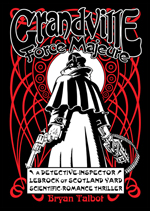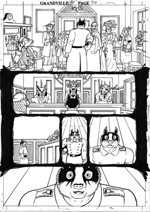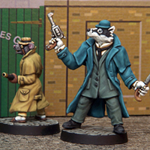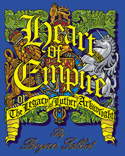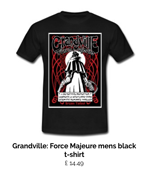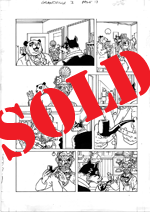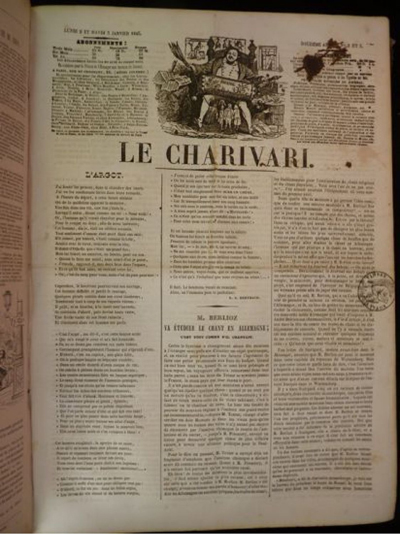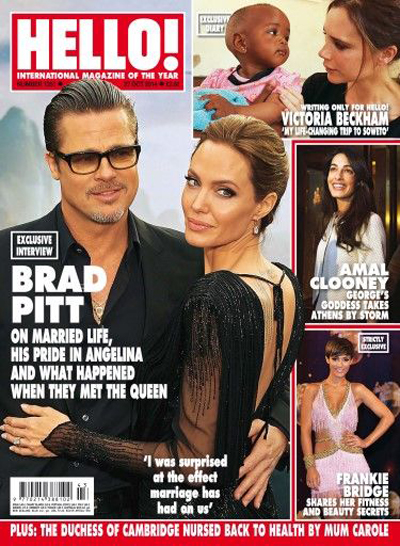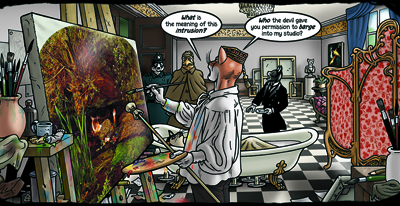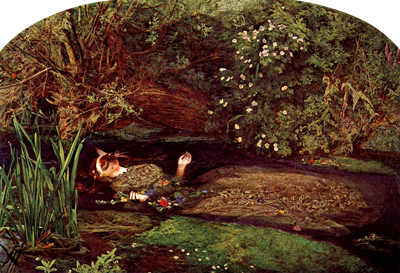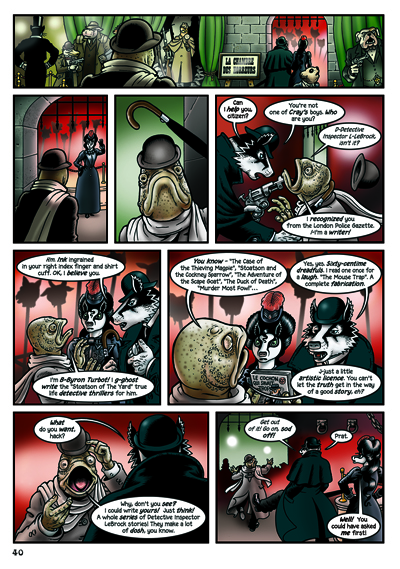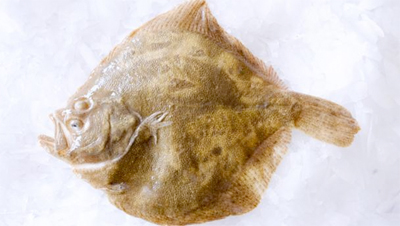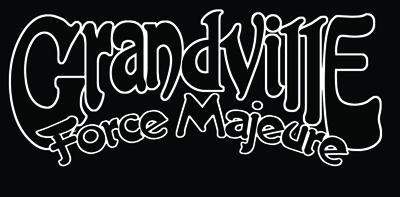
Grandville Force Majeure
annotations - batch 3
This is similar in concept to the Directors Cut of Heart of Empire that Bryan and myself created: it is an attempt to answer the eternal "where do you get your ideas from?" question, and a way to showcase the influences and images that went into the creation of Grandville.
We are publishing updates to this page every Sunday and we will cover the entire Grandville series: we have already completed the annotations for Grandville, Grandville Mon Amour, Grandville Bête Noire and Grandville Noël - and in case you missed them, check out the first batch of Grandville Force Majeure annotations.
Start reading the Grandville Force Majeure annotations below, or jump straight to page 31, page 32, page 33, page 35, page 36, page 37 and page 40.
Page 31
Panel 1
“the importance of seemingly trivial minutiae” - Holmes’s philosophy.
Panel 4
Scuffed toes of shoes indicating that a character had been dragged is a deduction in many detective stories but, to the best of my knowledge, I came up with the idea that different sorts of abrasions could determine the type of surface the body had been dragged over.
Panel 7
“Elementary.”
Contrary to popular belief, in the entire Holmes canon, the Great Detective never says once “Elementary, my dear Watson”. He does, however, say “elementary” a few times.
“I was looking for them.”: a Holmesian trait
Panel 8
“The Lutetia Hotel”: Lutetia Parisiorum was the name of the city founded by Rome in the first century B.C., the site of present-day Paris.
The Lutetia Hotel, is a beautiful art nouveau hotel in the Saint Germain des Prés area of Paris, with a rich history.
We were lodged there once by Bragelonne, the French publishers of the first two Grandville volumes, when we were there for a signing at the massive Paris Book Fair.
Page 32
Panel 4
“Maurice William Whitemanx”: His first two names are a phonetic switch of “William Morris”, the famous Pre-Raphaelite painter and writer. For the benefit of international readers, a Manx cat is a tailless breed, native to the U.K.’s Isle of Man.
Page 33
Panel 2
Château Lafite Rothschild is one of the world’s most expensive red wines.
Panel 6
Stoatson is reading the British humour and satire magazine Punch, or The London Charivari, first published in 1841 and in print for well over a hundred years. It established the use of the word “cartoon” to describe a funny illustration, the original medieval meaning being simply “a drawing”.
It’s a bit too small to see properly, but I gave Punch a dog’s face.
Here, the magazine is simply titled “Charivari”, the name of Punch’s French forerunner, Le Charivari.
Page 35
Panel 5
“Canoodlin’”: 19th century slang for “engaging in amorous activities”.
“Snoggin’”: for the benefit of non-U.K. readers, “to snog” means “to kiss”.
“Bubbies”: 18th century slang for, as you can guess, breasts.
Panel 6 onwards
“Bonjour”: “Hello” is a U.K. weekly magazine specialising in celebrity gossip, often about royals, and so-called human interest stories. In case you can’t read the headline, it says “Napoleon Chez Lui” (“Napoleon at home”).
Page 36
“Lavender Lodge”: a reference to the Sherlock Holmes story The Adventure of Wisteria Lodge
Panel 5
The painting is a re-working of Ophelia by leading Pre-Raphaelite artist John Everett Millais (1829 – 1896). The model was artist and frequent Pre-Raphaelite Brotherhood model Elizabeth Siddal, who posed fully-clothed in a bathtub in the middle of winter. Millais used oil lamps beneath the bath to warm the water (here, it’s candles) but he was concentrating so much on the painting that he didn’t notice when they burnt out, making the water icy cold. Siddal caught pneumonia and her father had Millais pay her medical bills, under the threat of legal action.
The painting is part of the permanent collection of the Tate Gallery.
The quotation is from Hamlet, Act IV, Scene VII
Page 37
Panel 1
“They’ve been overshadowed by the French masters”: In the world of Grandville, after 200 years of French cultural imperialism, not being taught in schools or performed, British writers such as Shakespeare have been replaced by the grand playwrights of French history, such as Molière, Corneille and Racine.
Panel 4
Malkin: archaic term for cat and, incidentally, slattern.
Panel 6
The Mouser Club: “Mouser” dates back to the 16th century, meaning generally a catcher of mice and rats, usually a cat.
Page 39
Panel 2
“Yorkshire pudding”: not as rude as it intentionally sounds here, this is a type of British batter pudding, usually served with roast beef and gravy.
Panel 4
“Silly goose”: an old-fashioned name for a silly person, which is why the cook’s a goose in the first place.
“Beef Napoleon”: Beef Wellington, the ingredients of which are listed in the next panel, was named after one of the victors of the Battle of Waterloo, the 1st Duke of Wellington. In this world it is, of course, named after Napoleon I, who won the battle here.
Page 40
The Chamber of Horrors, which serves as a backdrop to the next 2 pages, was the original travelling waxwork show by Madame Marie Tussaud (1761 – 1850), which toured Britain for 3 decades before establishing her original museum in London’s Baker Street. It displayed wax representations of the heads of aristocrats guillotined during The Terror following the first French Revolution (1789).
Panel 5
Byron Turbot: I thought it would be amusing to put myself in the story, as it were, suggesting to LeBrock that I write a series of stories based on his adventures. Turbots are particularly ugly fish, as you can see here.
Panel 6
The book titles:
“The Thieving Magpie”: an opera by Rossini (La Gazza Ladra)
“The Duck of Death”: A reference to the brilliant Unforgiven (1992), already mentioned in connection with the cover to Force Majeure. See this video for an explanation.
“Murder Most Fowl”: Murder Most Foul, apart from being a quote from Hamlet, is the title of a 1964 movie adaption of an Agatha Christie murder mystery (Mrs McGinty’s Dead) starring the great Margaret Rutherford as Miss Marple.
“The Mouse Trap”: The Mousetrap, already discussed in the annotations to page 22, is the West End stage play by Christie.
“Le Cochon qui Savait Trop”: Fr. The Pig Who Knew Too Much: seen on the title page of the book held by Turbot, is cheerfully lifted from a spoof book cover by Jeff Darrow, a joke based on the title of the 2 Hitchcock films of the same name, The Man who Knew too Much.
Now see the annotations for Grandville Force Majeure pages 41 to 60.

